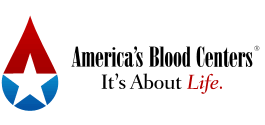What’s Our Community ROA?
A cursory review of recent blood banking operations literature points to a rather dramatic shift (or decline, if you prefer) in core blood product demand and many speculate we will see more of the same over the next few years. If this is true (and I happen to believe it is), then we have an obvious problem of over-capacity. In the for-profit world, such a dilemma typically triggers industry leaders to investigate two questions: What does the demand characteristic of the future look like (in other words, how much change, how fast, and what impact will it have on our breakeven point?) - and - What are the barriers to exit should we need to move resources to another purpose? I will leave the challenges that blood banking faces with using dated national market information for a subsequent article. But I want to tackle the second question by asking how non-profits in general, and blood banks in particular, evaluate the exit question.
The for-profit world generally employs a return on assets (ROA) analysis to determine the best use of (or return on) its capital. In the non-profit world, the question of "return" is less clear, because non-profit governing boards do not rely primarily on a financial ratio to evaluate alternatives for the organization's capital and the possibility of "exiting" their mission; rather, they seek to understand a more ambiguous, but in no way less important, measure of their value to their constituents and how best to sustain their mission in difficult times. This is not to suggest that financial realities are unimportant. And we all understand our stewardship responsibility to the population we serve. But I would argue that deciding on a clearly defined measure of community value may be a worthy undertaking for us and help inform our decision-making on how best to serve our community, regardless of our long-term structures.
An examination of the history other industries faced with circumstances similar to ours suggests that some managed changes in demand rationally, while other industries devolved into counterproductive and eventually quite hostile environments. An inclusive discussion to clarify our community value proposition in our current environment will help maintain effective dialogue crucial to managing the capacity challenge we face.
I further believe ABC is the appropriate venue for this discussion and look forward to the opportunity to exchange ideas and hone what we already sense is our community value proposition.
Dave Green, Board President; [email protected]
Posted: 11/08/2013 | By: Dave Green, Board President | Permalink
< Back to list






